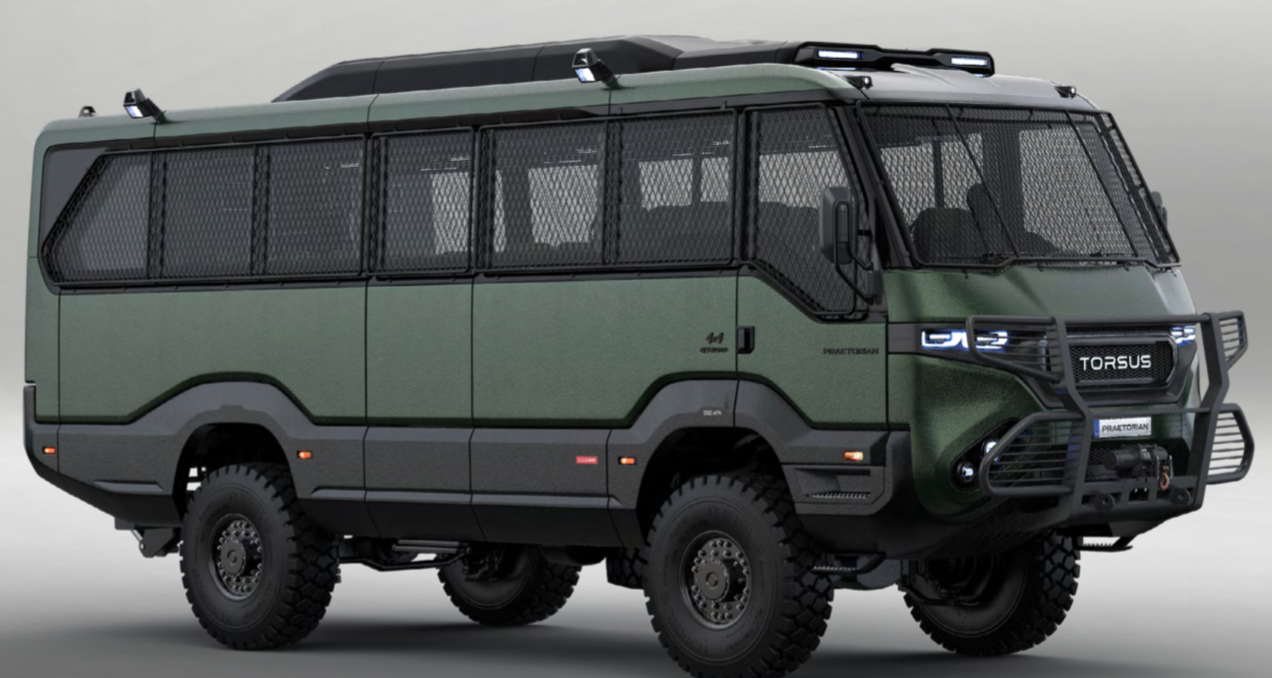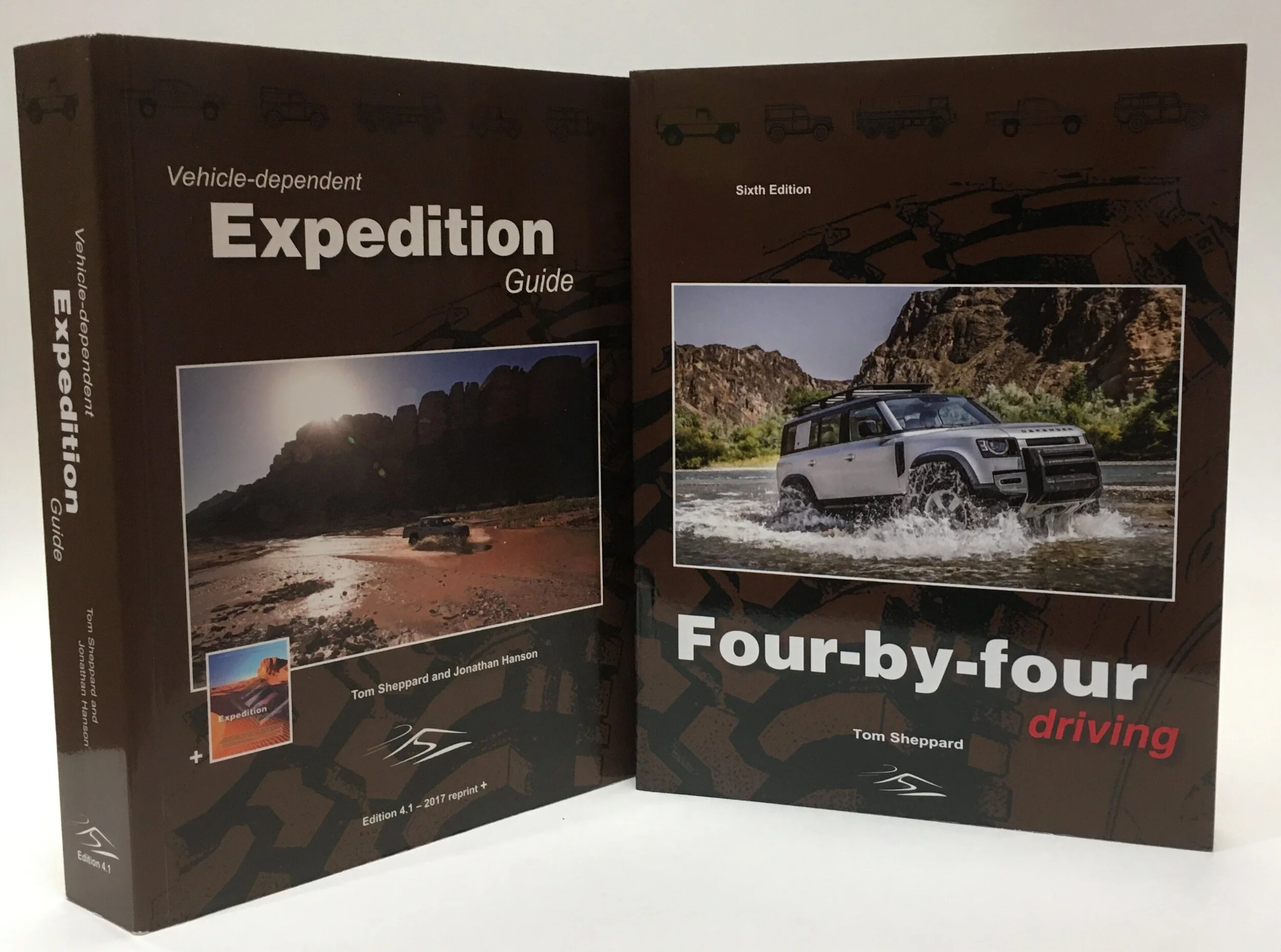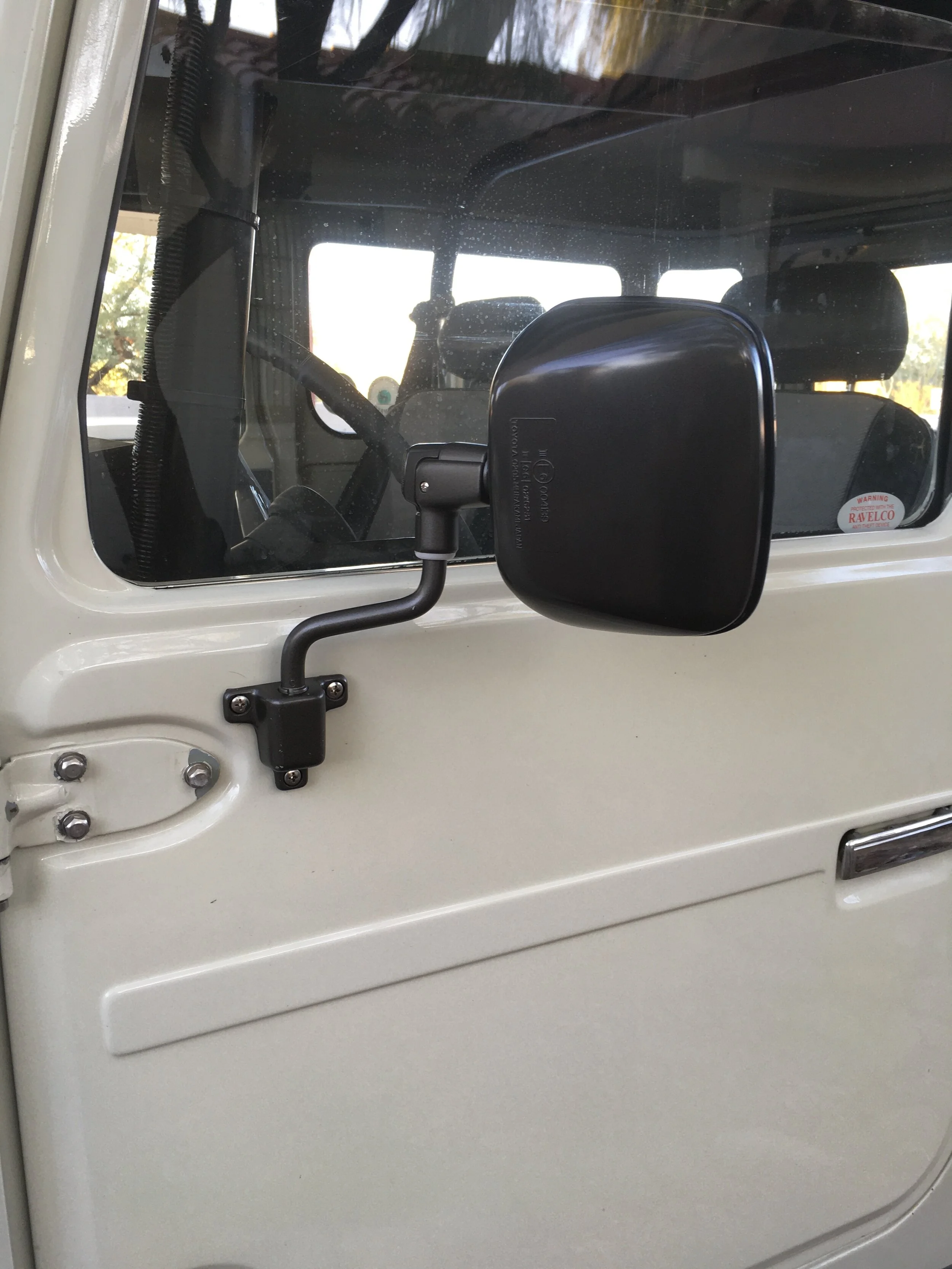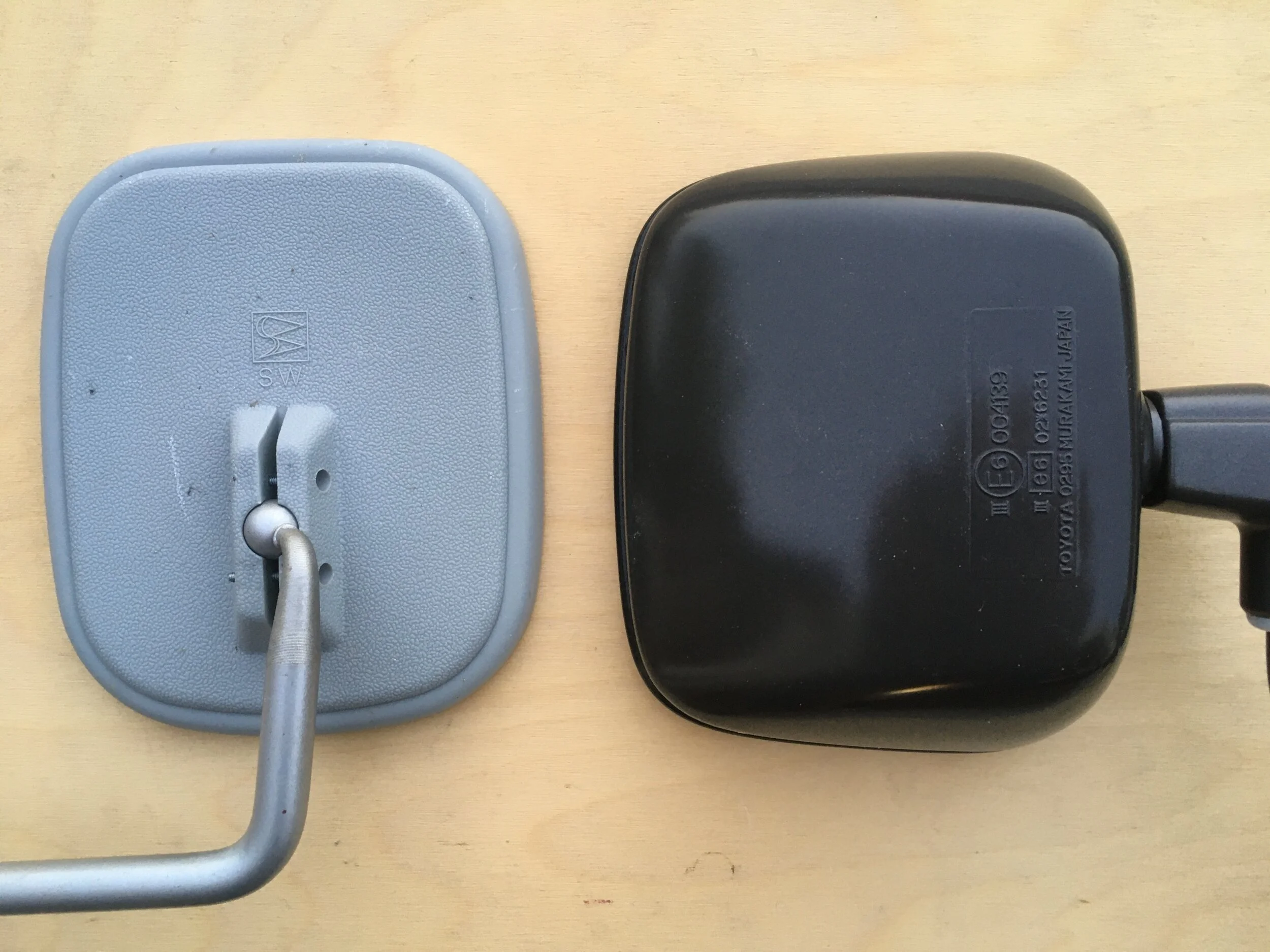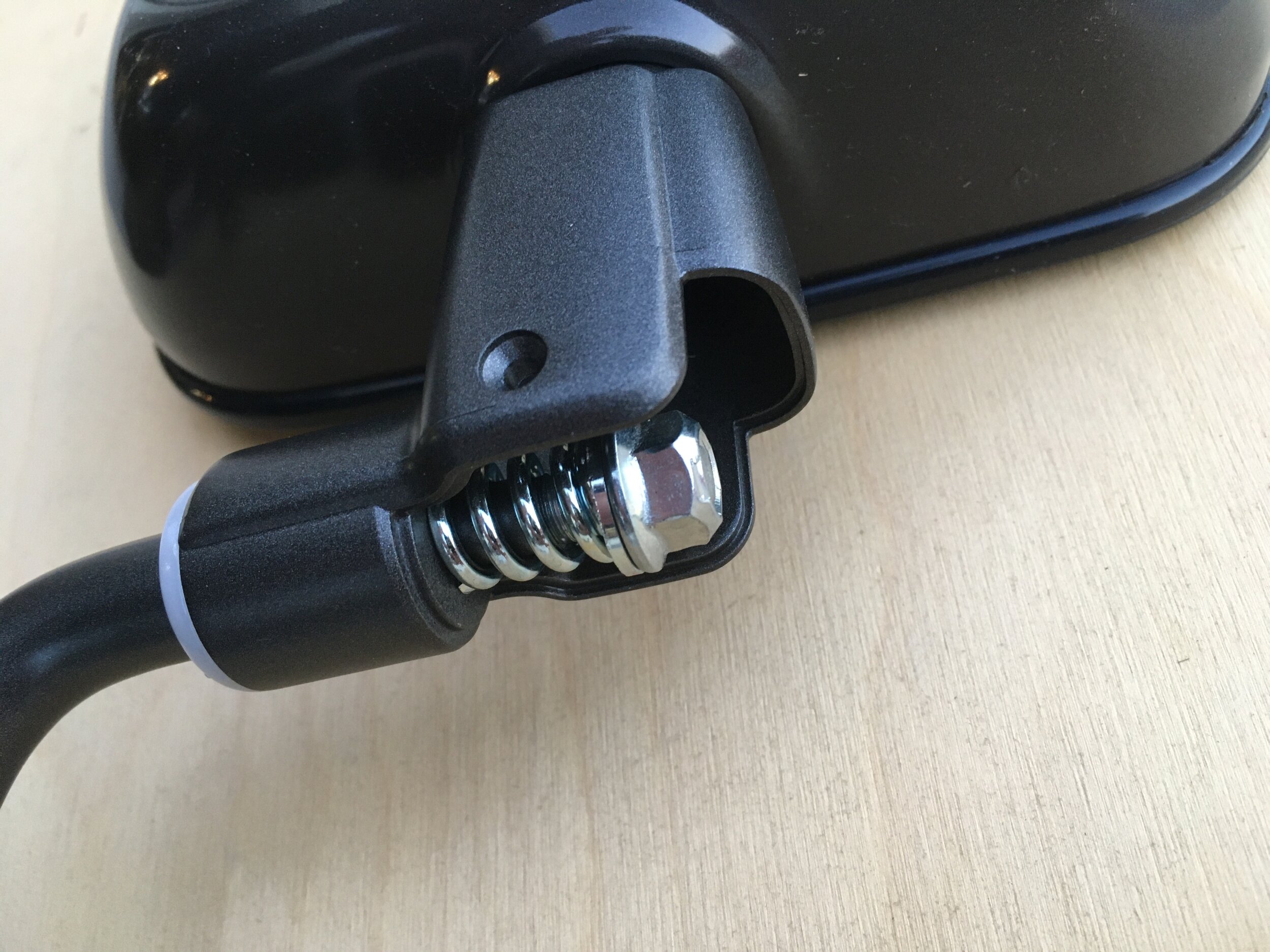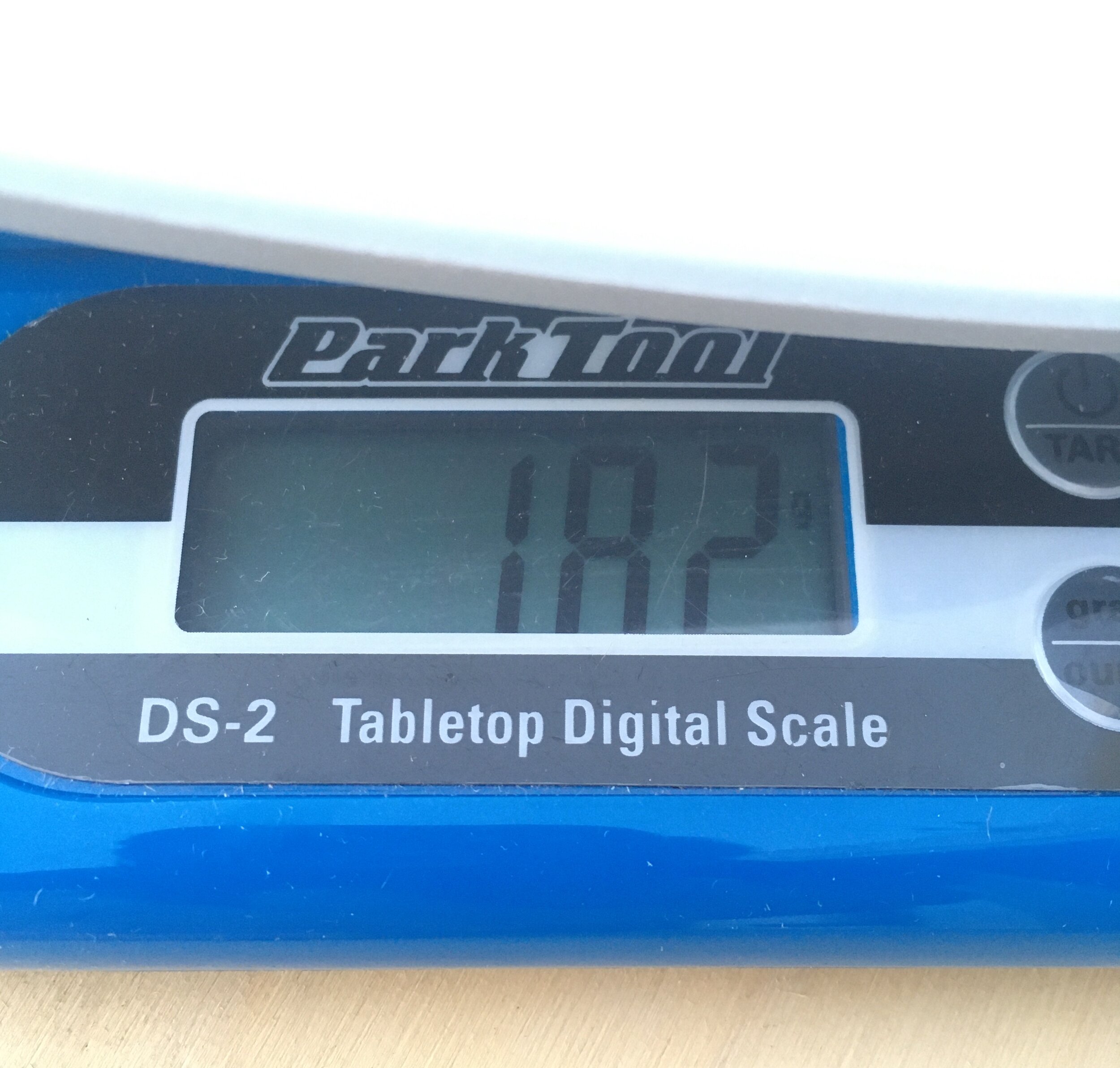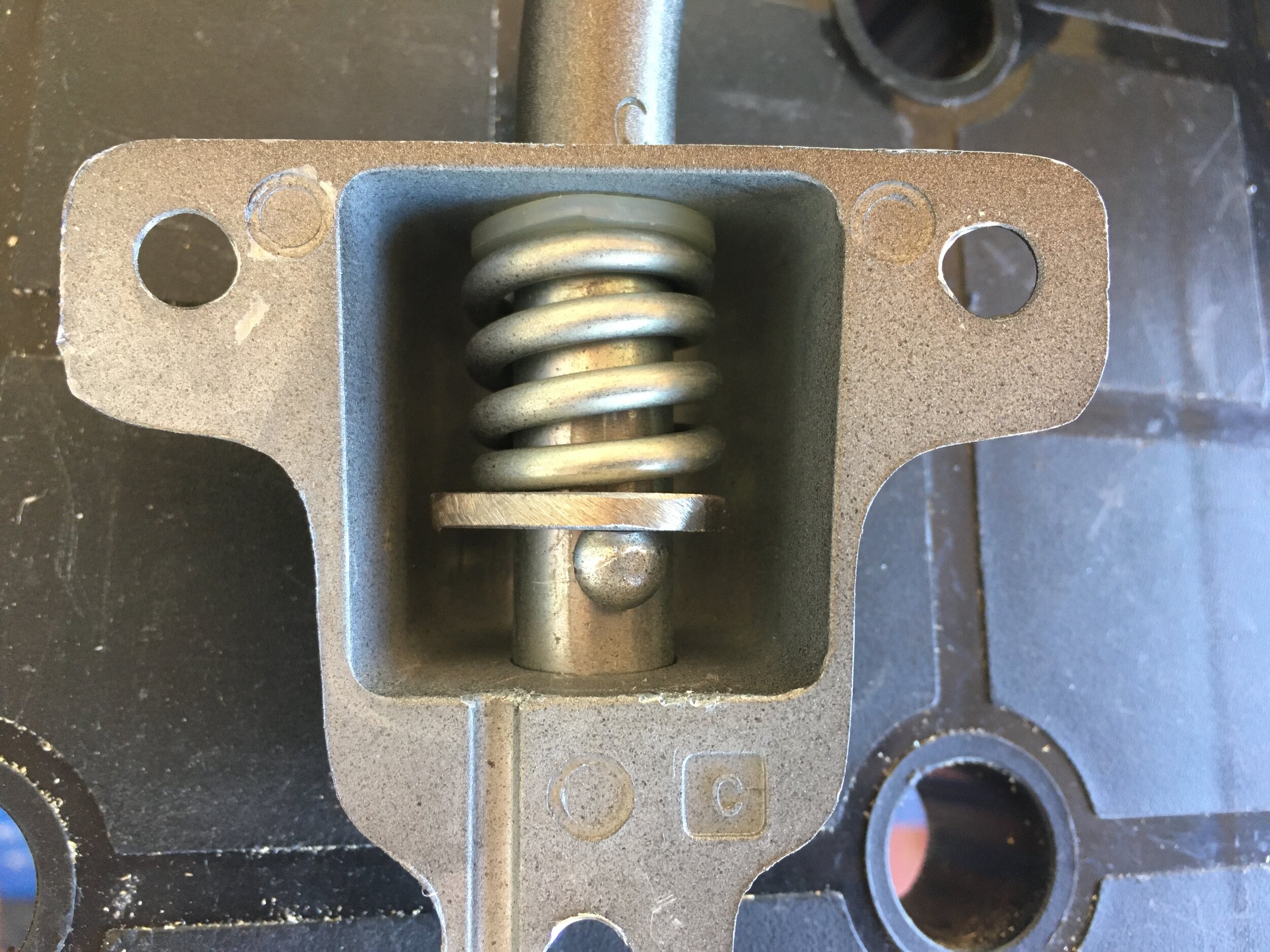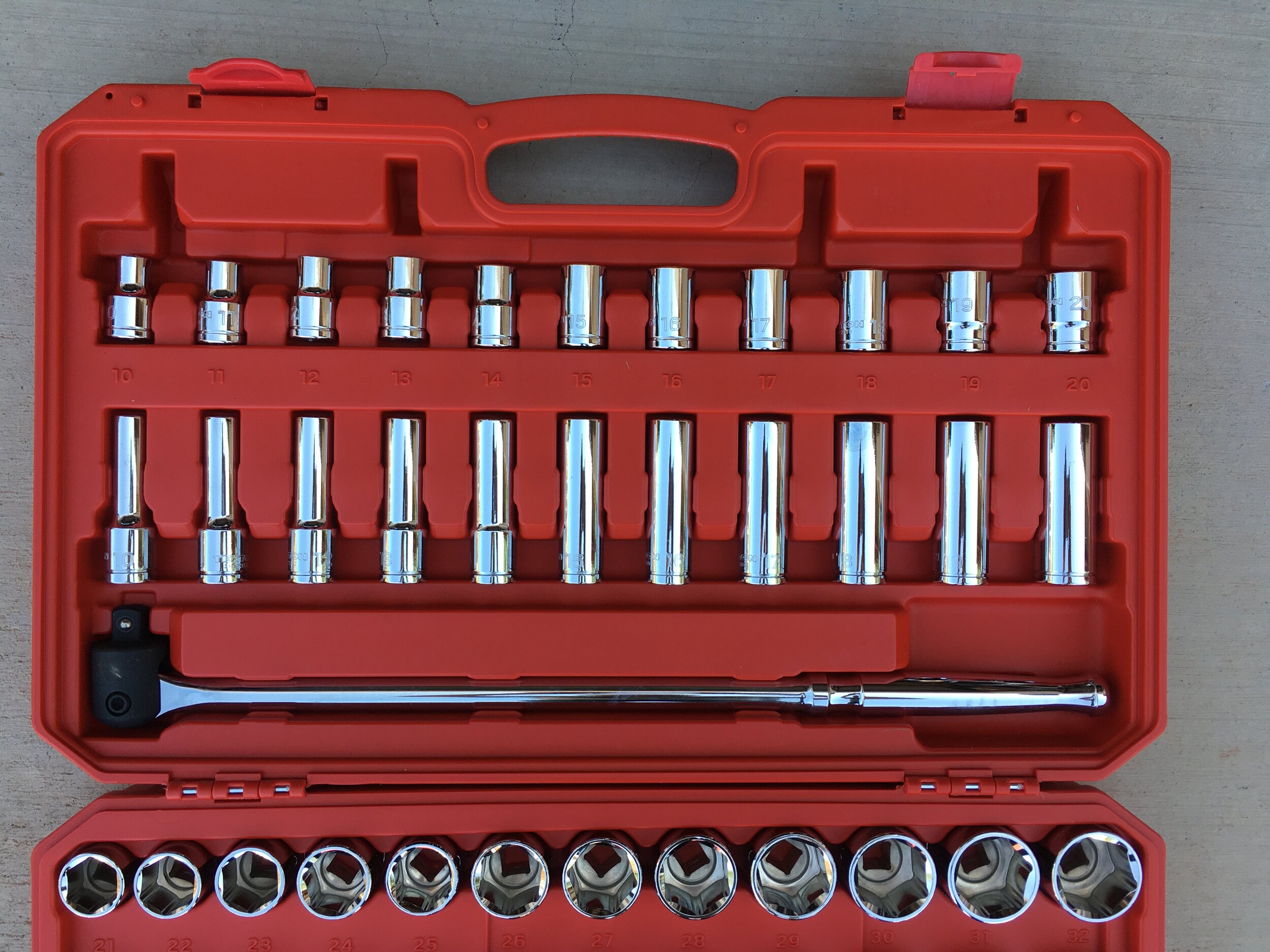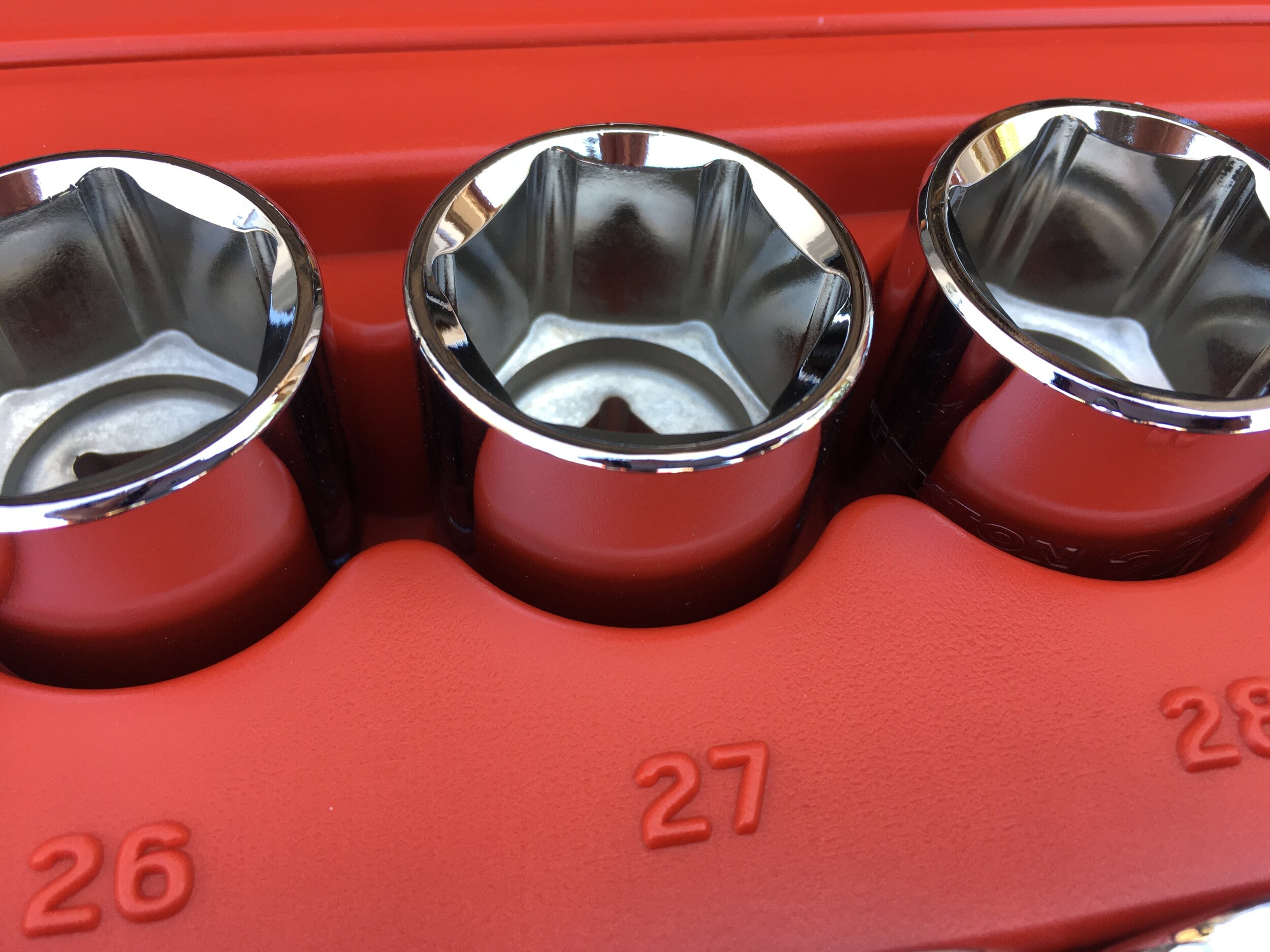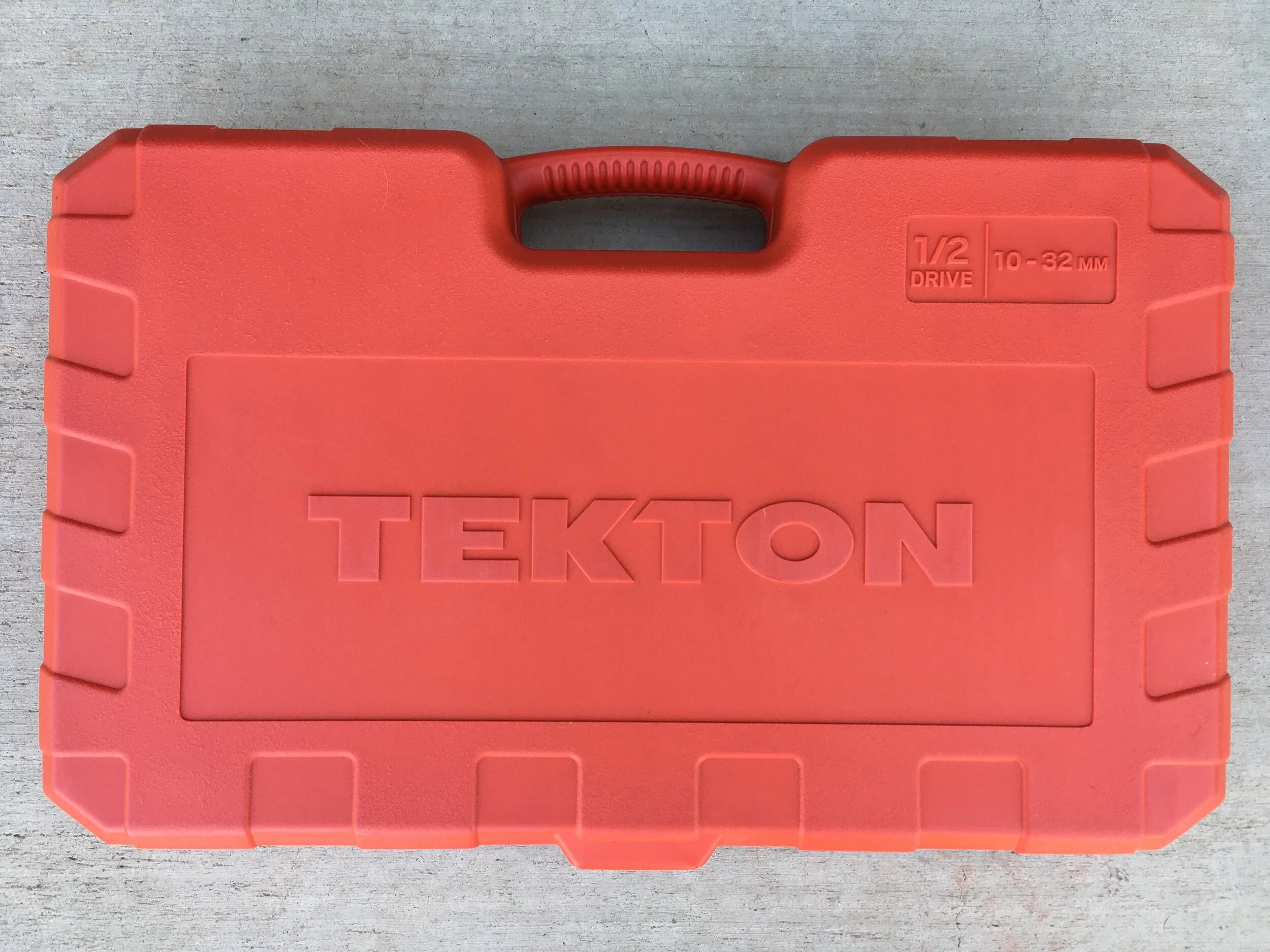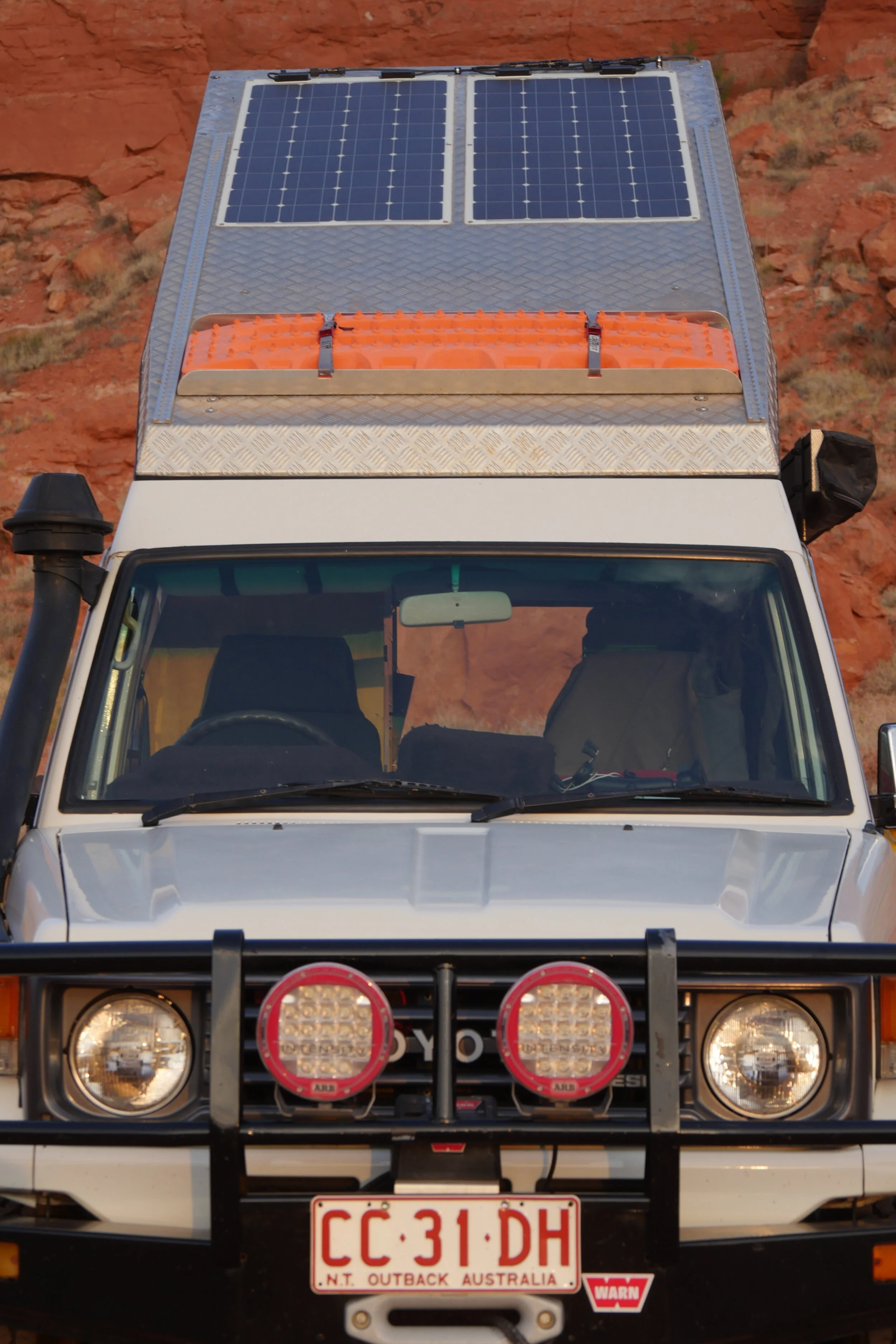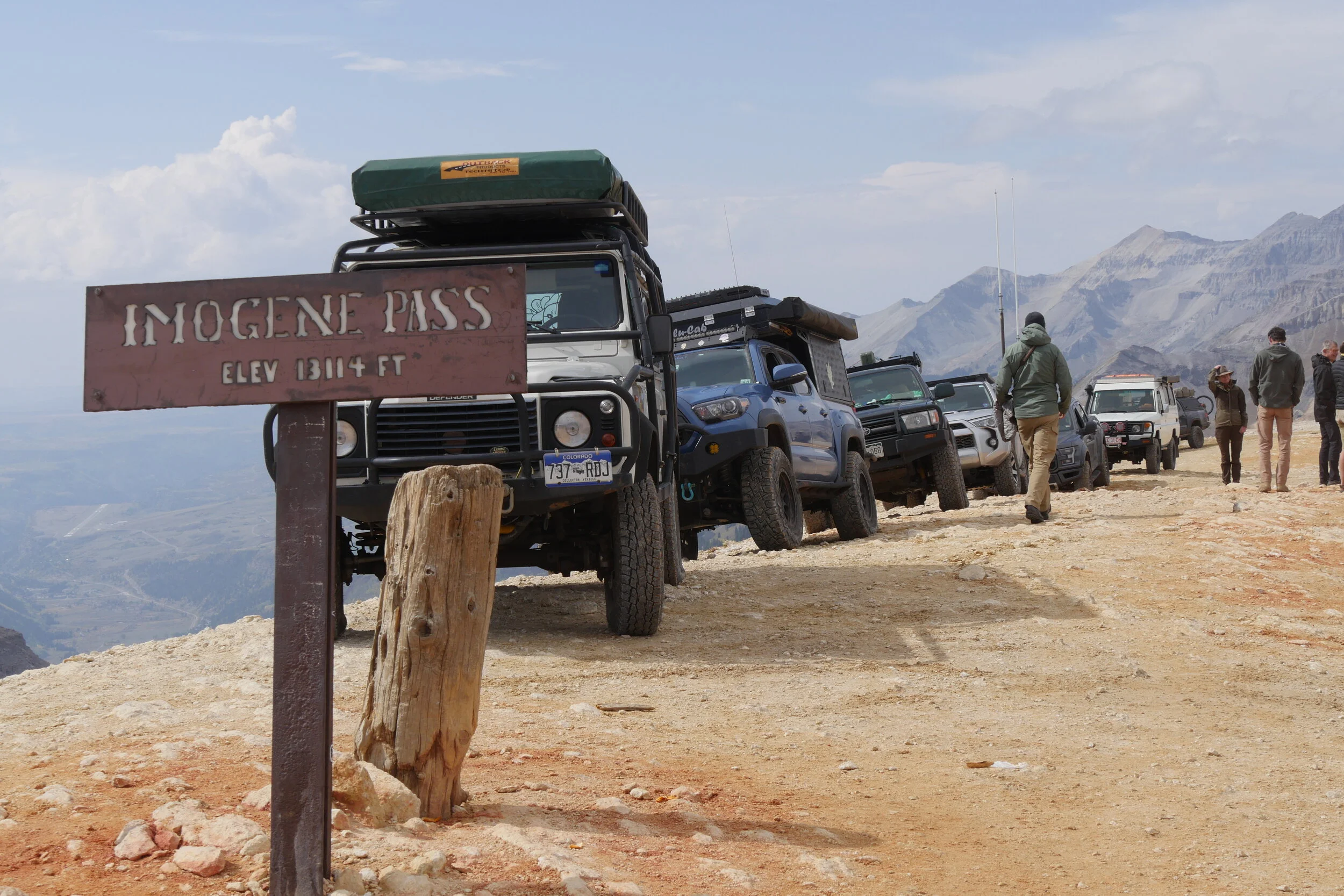
Overland Tech and Travel
Advice from the world's
most experienced overlanders
tests, reviews, opinion, and more
Camper conversion from a school bus? How about this one?
Intended to carry up to 35 students to school over the world’s toughest roads; imagine the camper conversion you could build in this thing.
From the company’s CEO:
“The PRAETORIAN SCHOOL BUS by TORSUS can carry up to 35 children on any of the world’s toughest school run routes, whether on- or off-road. Special features include bespoke original seats styled around mathematics and science designs. The seats are covered with a polymer protective coating, made to rigorous TORSUS standards, equipped with a seat belt suitable for all ages while optional extras for the seats include a foldable armrest and hip support bar on the aisle side.
The TORSUS PRAETORIAN is built for world’s toughest jobs and to transport personnel and equipment across inhospitable terrain in any conditions. The PRAETORIAN is based on an upgraded heavy-duty MAN chassis and is powered by MAN engines and drivetrain. The SCHOOL BUS edition of the vehicle features uprated off-road Michelin tyres and coating on body parts meaning that PRAETORIAN is engineered to take on any terrain, on any terrain, anywhere in the world.”
Powered by a 6.9-liter diesel engine, with four-wheel drive, front and rear locking differentials, and—wait for it—Michelin XZL tires, the Praetorian boasts some impressive specs. I can’t biggify this chart, but that’s a 900mm fording depth, a 33º side-slope capability, and a 65% grade capability.
Of course you don’t have to go with the Zonker yellow bus version; there’s also the more menacing-looking MP:
Torsus is here.
Overland Tech - Dissecting the One-Case Tool Kit, Ep. 2 - Wrenches and torque wrenches
Don’t even think about using pliers on that nut. Aside from a socket, a wrench is the only proper way to fasten or remove a nut of bolt without damaging it. But what wrenches should you carry? How big should you go? What about ratcheting wrenches and box wrenches? We’ll also discuss torque “wrenches,” and why you should have and use one regularly.
An interactive Q & A session will be included.
When: Nov. 1
Length: 1 hour
Start time: 1 pm Arizona (Phoenix) / GMT - 7
(Having trouble figuring out time zones?Use this calculator: https://www.timeanddate.com/worldclock/converter.html)
Format: online via Zoom (you will receive a log-in link)
Cost: free
Access: To protect your privacy and security online and for us to find out how many students will be attending, registration is required. Please use this link HERE.
Book sale!
If nothing else, all this isolation and separation have offered us opportunities to learn new skills, or expand existing skills. So for the first time we’re having a sale on these two titles. Buy the Vehicle-dependent Expedition Guide for $10 off, or Four-by-four Driving for $5 off. Or, purchase the “bundle” and get $20 off the pair. Need we mention the Holidays are drawing closer?
It’s all on our Publications page, right here.
Note: We’re expecting a slightly revised edition of VDEG in a couple of months, which will include information about the new Defender. If you’re anticipating that vehicle you might consider waiting for the new edition. Otherwise changes will be minor.
Mirror deja vu all over again . . .
Didn’t I do this not long ago? Yes: See here.
After swapping out what felt like a half dozen varieties of rear-view mirrors on my FJ40—from the original 1973-vintage high-quality but too-small round ones, to windscreen-hinge-mounted units blocked by the roll cage, back to a door-hinge-mounted rectangular model with a field of view tall but not wide enough—I finally gritted my teeth and drilled the doors to install later-type large rectangular mirrors. No longer available from the factory, I got copies from Cool Cruisers in Texas. I was unimpressed with the cheap-looking gray plastic backing on the glass (which to be fair looked just like the factory plastic), but much happier with the positioning and field of view.
For about a week.
That was how long it took me to discover that:
The heads would not stay in position more than a few days. Tightening the microscopic pair of clamping bolts and nuts made it clear they would eventually either simply pull right through the plastic, or the nuts would chew through their microscopic hexagonal recesses and simply spin.
The distortion in the cheap glass made the view to the rear look like something in a carnival funhouse.
Sigh . . . back to square one. Have I mentioned that I place great importance on having a clear, safe view to the rear of my vehicle?
I looked around again. Gazed at the FJ Company’s glorious looking mirror set, which they install on their higher-end restorations. $1,200? Seriously? And, oh . . . no returns if you don’t like them.
Then I found the solution—almost—on the oddly named but superb Land Cruiser parts resource site City Racer: “Euro spec” 40-series Toyota factory mirrors—clearly in a different league to the “North-American spec” units. $299 a pair. Wincingly, painfully, but not hallucinogenically expensive.
And out of stock.
I did a search, and found them elsewhere. At, of course, a higher price. Just about $200 each—without electric adjustment, defrost function, turn-signal indicator LEDs, or Bluetooth connectivity. But by now I was committed.
Ordered. Installed. And wow, what a difference. I haven’t the slightest idea why Toyota installed such superior mirrors only on the European export vehicles. Regulations? Higher customer expectations in those markets?
No matter—on a first drive the new mirrors seemed to have solved all my problems. The clamping mechanism of the mirror head is a stout nut which adjusts tension on a stout spring.
The mirror head itself is two and a half times heavier than the U.S. version.
182 grams . . .
. . . versus 487.
The glass—slightly convex—was superb. I’ve never had such a clear, expansive view to the rear of the FJ40. The bonus is, the Euro mirrors actually look like they cost ten times what the aftermarket-copy U.S. versions did. I was happy . . .
Almost.
On the drive out to our desert place over the rough seven miles of dirt, I noticed the mirrors shifting very slightly, not at the head but at the base of the arm. Slamming the doors a few times confirmed that they rotated slightly under similar force. I took them off and examined the spring that tensioned the arm. Unlike the head, there was no threaded nut, just a spring and a pin to lock it in place. No way to adjust the tension. So I disassembled the unit and ground down a washer to fit over the shaft and inside the housing, squeezing the spring just an additional eighth of an inch or so. That was all it took; the mirrors are now rock solid.
Assembly with washer to compress the tension spring.
All better:
I expect this to be my last post on FJ40 mirrors for some time . . .
Tekton 1/2-inch ratchet and socket set
I’ve written and said in classes many times that the single most important component of your field tool kit is the 1/2-inch ratchet/socket set.
The 1/2-inch set is what you’ll get out if something serious needs fixing or replacing. It’s what you need to remove a transmission (or an engine), to work on your suspension, to repair a Birfield. (And of course it’s also suitable for many more mundane tasks.) Critically, there are no bodge substitutions—if your cheap 21mm socket splits while removing a transmission bolt, you won’t get that bolt off with a pair of pliers. So this set should be your absolute top priority for quality.
So okay . . . let’s head to the Snap-on website. Their 317AMMPC general service set includes a Dual-80 80-tooth ratchet—arguably the best on the planet—a 5” and 11” extension, an 18” breaker bar, and sockets from 12mm to 24mm. Price: $734. If you want to add larger sockets, which you absolutely should, you can do so individually. For example, a single SWM321 32mm socket will run you $52.25. So figure somewhere near $1,000 for a reasonably comprehensive Snap-on 1/2-inch ratchet and socket set with shallow sockets from 12mm through, say, 32mm.
Make no mistake, this is as premium in both price and quality as hand tools get. The Dual-80 dual-pawl ratchet mechanism is as precise as a Patek Philippe tourbillon yet massively strong—the company supplies this same head with a handle a full 24 inches long, so you know they have confidence in it. I have a flex 18-inch version (SX80A) and it’s one of my favorite tools. The sockets are of course beyond reproach, and everything is manufactured in the U.S. If you have the funds for such a set I cannot recommend it more highly.
But how many of us do have the funds? I have a decent selection of Snap-on tools, but most were bought on eBay second-hand. (Also, for a short time while I was the editor of Overland Journal I had a PR contact at Snap-on who would essentially send me anything I asked for. I responsibly but sadly under-exploited him until he disappeared, probably sacked for shipping off so much free stuff to magazine editors.)
Let’s take a look at an alternative. I’ve mentioned Tekton tools before, here, but to summarize: After stumbling upon their booth at an Overland Expo, I found myself impressed with both the tools and the company’s website, which comprehensively describes each tool in the catalog, lists its country of origin (mostly Taiwan, in my experience an excellent source for quality tools), and, impressively, also graphs the minimum ANSI specs for the tool and the amount by which each Tekton item exceeds them.
The company sent me a cased 1/2-inch ratchet and socket set, part number SKT25201. It’s a monster: 20 by 12 by 3.5 inches, and a full 27 pounds worth of chrome-vanadium steel.
Inside is a total of 52 pieces, comprising:
Shallow six-point sockets from 10mm through 32mm, with no skipped sizes
Deep six-point sockets from 10mm through 32mm, with no skipped sizes
A 90-tooth quick-release ratchet
An 18-inch breaker bar, with an external pivot axle Tekton claims is stronger than the traditional pivot
Two knurled extensions
A universal joint
That’s an astonishing array of sockets. Honestly I would have skipped the 10mm and 11mm sockets; nuts of that size are more conveniently handled with a 3/8ths or 1/4-inch ratchet, and you risk over-torquing them with a 1/2-inch ratchet. But they’re there if you want them. The only reason you might need a larger size than 32mm is for some crankshaft bolts or hub nuts.
The ratchet one-ups Snap-on with its 90-tooth drive. The handle only requires four degrees of swing to engage the next pawl, a real advantage in tight quarters. ANSI proof torque for a 1/2-inch ratchet is 375 pound-feet; the Tekton easily exceeds that with a 560 pound-foot rating. The only minor disappointment is the inevitable Snap-on-copy handle shape. But then it is comfortable.
The retail price for this kit? $150.
Tekton’s sockets incorporate Snap-on’s now out-of-copyright Flank Drive, which bears on the shoulders of the nut or bolt rather than the corner. Finish is excellent.
I’m sure you could beat even this price down at the store named for where ships congregate, but you wouldn’t approach this quality. Consider Tekton’s guarantee: If you break a tool, all you have to do is send them a photo of the broken piece and they’ll ship you a new one. Tool companies offer lifetime guarantees for one of two reasons: Either the tool is made so cheaply that they can afford to replace broken ones and still make a profit, or they’re confident that breakages will be rare. I’m pretty sure Tekton is in the latter category if they’re willing to offer a send-a-photo warranty.
The Tekton kit is probably overkill for a single vehicle’s field kit—although it would be a superb resource for a group trip—but I guarantee you can pick and choose among this vast assortment to assemble all you’d ever need for your own vehicle on any trip you could imagine. And of course as a home kit it is supremely comprehensive.
Tekton is here.
Renogy solar panel update
During the course of a ten-day trip helping Graham Jackson and Maggie McDermut lead a trip through Utah and Colorado, we had a chance to evaluate the performance of our two new 100-watt Renogy solar panels.
As expected, the panels provided an excess of power to keep our auxiliary battery at float voltage under the draw of a National Luna fridge/freezer and numerous charging devices and inverters. I was astonished the morning of the camp above to note the panels inputting about a watt of power before the sun was on them, just from ambient light.
I debated before going with semi-flexible panels. It’s generally accepted that rigid panels are more durable. However, I really like the zero wind (and thief) profile of the adhesive-secured Renogy units. Our last such panels, on the roof of our Four Wheel Camper, were still producing full power when we sold the camper eight years later, so I’m hoping for similar performance.
Mounting rigid panels also would have required drilling through the Mulgo pop-top roof to install rivnuts, and I avoid drilling extra holes in the roof whenever possible.
I’m planning to fabricate or have fabricated some sort of fairing to cover the several MC-4 connectors I needed at the back of the panels (to siamese the four power cables into two), to protect against low-hanging branches I might fail to avoid.
Renogy is here.
The new (ish) Ford Super Duty pickups
Note: a version of this article appeared earlier this year in OutdoorX4 magazine.
Question: Can an environmentalist—that is, someone concerned with the fate of our planet and its inhabitants (human and non-human), who trusts the findings of thousands of climate scientists, and who strives to live a responsible and reasonably low-impact life—possibly endorse a one-ton four-wheel-drive truck powered by a 475-horsepower turbodiesel V8?
I thought about this as I drove west on I-10 from Phoenix, piloting a 2020 Ford F350 SuperCrew Platinum 4x4. Tim Stoehr, a Ford product line manager, rode in the passenger seat; another journalist, Kevin Jones, sat in the spacious back seat. From the moment I’d started the truck and pulled out of the Wigwam Resort, to accelerating up the ramp on to the freeway and cruising at 75 mph, there had been no audible sign I was in a diesel truck. None. The sole giveaway was the monstrous thrust forward when I flattened the pedal. The ten-speed Torqshift transmission, brand new and beefed up to handle the—ready?—1,050 lb.ft. of torque produced by the 6.7-liter Power Stroke V8, produced shifts imperceptible enough to embarrass a Bentley.
I had adjusted the heated steering wheel both up and down and in and out to my preference, along with the adjustable pedals. My 10-way-adjustable leather-clad seat boasted both heating and cooling functions, and after we’d been on the highway for 20 miles or so Tim asked, “How about a massage?” I laughed, but then he reached over to the touch-screen and tapped a couple of times—and immediately, up my back and under my thighs I felt as if someone were running a rolling pin back and forth along my muscles. The seat incorporates multiple air bags that provide lumbar support, but can also be sequenced to produce a definite shiatsu effect that I had to admit might be welcome after five or six hours on the road.
By this point a few of you might have agreed with me if I’d thought, Who needs polar bears anyway? But we’ll come back to that.
Tim pointed out the unsurprising fact that the massage function was part of a premium package. I’m not sure what he thought of my suggestion that they could include it on the base model but have it operate with quarters.
After 40 miles on I-10 we headed north on a two-lane road that turned to winding dirt. For an unladen one-ton truck this one rode well, with surprisingly little side-stepping on washboard. The structure felt as solid as a 7,000-pound pickup on a fully boxed chassis ought to feel. Actually, despite its long list of features and a crew cab, this truck weighs less than my 2004 F350 Super Cab, thanks to an aluminum-intensive cab and bed structure.
We pulled into the parking lot of This Dude’s Food and Brew in the one-horse town of Congress, Arizona, where several thousand horses awaited us in the form of various Super Duty trucks hooked to an escalating tonnage of trailers, from a 7,500-pound Black Series all-terrain model up to a gooseneck monster supporting a Kubota backhoe and a tracked digger—this to showcase the top Super Duty towing capacity of—ready again?—37,000 pounds. I believe my first house weighed less. In fact only those who possessed a commercial driver’s license were legally allowed to try out the F450 dually hooked up to this thing. I contented myself riding along while Kevin drove an F250 pulling the more overland-relevant Black Series camper up the seven-percent grade on Highway 89, past the memorial to the 19 Granite Mountain hotshot firefighters who died in the Yarnell Hill fire in 2013. The trailer might as well have fallen off for all the drag it imposed on the new 7.3-liter gas engine in this truck.
Need to tow a couple of tractors? No problem.
The towing demonstrations were impressive, but I was more interested in backcountry capability, so I was glad when we climbed back in the SuperCrew and headed 45 miles southwest on a dirt road that ended at a massive quarry, where Ford had constructed a driving course.
And a good one it was, too. In ten years of running the Overland Expo we developed some excellent driving courses, but by necessity ours had to be negotiable by a wide variety of vehicles. Here the engineers were able to tailor it very specifically to impress.
Among other challenges they had incorporated a rock garden, a 29-degree climb and matching descent, some elephant footsteps, a water channel designed to show off the “Tremor” package’s commendable 33-inch fording depth (except it had drained down to a foot and a half or so by my turn), and a rather awesome diagonal ditch crossing that Matt Flis, the engineer who accompanied me, said several journalists had pronounced impassable before they were shepherded across. A curving, truck-plus-a-foot-wide passage between a double row of rocker-height boulders showcased another feature: a “bird’s-eye” view of vehicle and rocks courtesy of multiple cameras. It was a bit unnerving to try to keep one’s eyes glued to the center screen rather than out the windshield, but it worked. (Nevertheless, like most such aids, I do not consider it an acceptable substitute for learning where your truck ends.)
Compliance is not bad considering the nature of the truck. Lack of chassis flex is impressive.
About that “Tremor” package. Whether or not it includes depleted-uranium skid plates to prevent ingress by giant subterranean carnivorous worms I do not know, but it does incorporate the following features:
35-inch-diameter Goodyear Wrangler Duratrac tires on 18-inch alloy rims.
Locking rear differential and (slightly disappointingly) Dana ABS-actuated traction control in the front axle.
Trail Control with a rock-crawl mode and selectable speed.
10.8 inches of ground clearance.
Decent approach and departure angles (for a big pickup) of 31 and 24 degrees.
Suspension modifications: lifted front end, progressive-rate springs, twin-tube shocks with 1.7-inch pistons.
A 53:1 crawl ratio on the 7.3-liter gas-engined trucks, and a 44:1 ratio for those equipped with the 6.7-liter turbodiesel.
An available 12,000-pound Warn winch equipped with synthetic line, very tidily hidden but with virtually zero visual or manual access to the drum to ensure correct spooling—a pet peeve of mine, yet more and more common.
Stylish but impractical hidden winch
The Tremor package is available on both the F250 (3/4-ton) and F350 (one-ton) trucks (oddly only the SuperCrew and not the SuperCab) in XLT trim level and above. But here is the important news for those contemplating one as an overlanding vehicle: The Tremor package retains the same base towing and cargo-hauling capacities as the standard truck, in contrast to most trucks with “off road” packages.
Lift bocks make for some loooong U bolts.
Suppose you were planning to buy a Four-Wheel Camper with which to do some exploration, and wanted a capable truck to carry it. We’ve owned two of these superb aluminum-framed homes away from home, both of them on Toyota Tacomas—an earlier narrow version and, later, a wider Fleet. In each case mounting the camper brought us bang up to the GVWR rating of the truck. We had to modify the suspension with air bags and heavy-duty shocks, and switch to E-rated tires. Fuel economy suffered significantly. We loved the size of the combination, as it presented very few obstacles in the backcountry. Also, obviously, we loved the Toyota reliability. But the compromises were obvious, and I was never happy with the chassis flex that resulted from the 2012 Tacoma’s open-channel rear frame sections (continued on the current model), or with its laughably antiquated rear drum brakes (continued on the current model).
Now consider that an F250 Tremor SuperCrew (crew cab) with the 6.75-foot bed has a cargo capacity of 3,450 pounds. The appropriate Four Wheel Camper model, the Hawk—a bit roomier than our Fleet—weighs 1,100 pounds dry according to the factory. Let’s assume some fudge factor there, add some options, then figure water, batteries, solar panels, etc. Give it 1,600 pounds. That’s still less than half the rated capacity for the F250, giving one plenty of leeway for a winch bumper and winch, a recovery-capable rear bumper, and other de rigueur expeditiony bits. If, on the other hand, you’ve been seduced by one of those ultra-stylish Black Series trailers, you’d find that its 7,500 pounds is exactly half the rated towing capacity of the F250 Tremor.
Now consider something else.
For various reasons you might laugh at given that my wife and I own five four-wheel-drive vehicles, I rented a truck for the drive from Tucson to Phoenix and back: a 2019 Toyota Tacoma Crew Cab, with the 3.5-liter V6 (gas, of course) and six-speed automatic transmission. Over the course of 260 miles of interstate driving between 75 and 80 mph, the truck returned a measured 19.6 miles per gallon. Note that this was a two-wheel-drive truck.
By comparison, the Ford Super Duty I drove back and forth between the resort and the driving venues, an F350 (i.e. one-ton) SuperCrew 4x4, with the 6.7-liter turbodiesel and 10-speed transmission, returned 19.4 miles per gallon over mixed freeway, two-lane paved, and dirt road driving. Further consider that my friend Michael Cox, who recently bought a new Super Duty and mounted his 20-year-old Four Wheel Camper on it, is reporting 18.2 mpg on the highway.
One can rightfully point out the significant up-front premium of the diesel engine, and the pernicious higher price of diesel fuel itself in the U.S. Nevertheless, considering solely the amount of fossil fuel burned by each vehicle, the result is eye-opening, if not shocking. Add to that Michael Cox’s confirmation of the fact that a large, powerful truck will lose a smaller percentage of its fuel economy carrying a camper (or towing a trailer) than will a small, modestly powered truck—our recent Tacoma/FWC struggled to top 15 mpg—and it might make you re-evaluate some preconceptions.
This leads us back to the question I posed at the beginning of this article.
I’m certainly not going to give you a pass if you use your F350 to commute 50 miles back and forth to your 7,000-square-foot home every day, and hop in the Gulfstream G550 for skiing weekends in Gstaad. But there are plenty of ways to reduce one’s impact on the planet besides not traveling anywhere or only driving a Prius (how about an F350 and a Prius, for example?). Yes, my wife and I own five 4x4 vehicles, but our 1,000-square-foot house gets more than 100 percent of its yearly electricity from the 3,600 watts worth of photovoltaic panels on the roof. I’m not putting us forth as environmental saints—my 46-year-old FJ40 is far from a paradigm of fuel economy or low emissions—but then I put more miles on my bicycle each year than I do the Land Cruiser. The point is that excess in one area can be conscientiously ameliorated by conservation in another. Even the often-snickered-at carbon offsets can help put a thumb on the good side of the scale.
There’s something else, however, that is at least as important as the personal-responsibility, energy-conserving, carbon-offset aspect of a civic-minded life.
Overlanding, reduced to its essence, is about traveling through beautiful country. And the more of that traveling we do, the more we appreciate the open spaces, the myriad landforms, the clear skies, the pure streams, and the wildlife we experience. In turn, that experience imbues us with a sense of stewardship, and a desire to protect what we have enjoyed so that our children’s children might be able to do the same. And that—hopefully—spurs us to vote on local and national conservation issues in ways that have far more impact than the immediate fuel efficiency of our mode of transportation.
What would happen if we stopped traveling? We might retain fond memories of the places we’d seen, but our children wouldn’t. They would grow up with no knowledge of or appreciation for those places. Pleas for conservation would be annoyances easily dismissed in favor of immediate, shallow pleasures. Why worry about the loss of something you’d never seen except in an old documentary? You can watch the video any time, or visit that new Disney World “Old Growth Forest Experience.”
No. We need to keep exploring, and we need to show our children the exquisiteness of wild places. Therefore, yes: This environmentalist has no trouble endorsing the new Super Duty pickups. Get one, put a Four Wheel Camper on it, and go explore, preferably with your or someone else’s kids. Then come home and do the right thing at the ballot box, and buy some LED lightbulbs and a half-dozen solar panels. Maybe even a bicycle—nothing does carbon offset like riding a bike.
And if you still find yourself feeling a bit self-conscious thinking about all this on a long drive to somewhere beautiful, just reach over and hit that massage button.
Novices in rental Jeeps
Our group of six vehicles was about halfway up the steep ascent of Imogene Pass, which connects Telluride with Ouray over a 13,114-foot summit, when we came to a halt. Graham Jackson, who was in the lead in his Defender 110, was around a cliff corner from Roseann and me in the tailgunner spot, and invisible. Uphill traffic has the right of way on Imogene—as on all one-track trails of its kind—so we assumed Graham was waiting for someone coming down to back up into a safe passing spot.
But as the minutes went by, we stayed immobile, and I began to wonder if someting else was up. So I got out of the Troopy and walked up past the three client vehicles and fellow guide Maggie McDermut’s 4Runner, in the middle of the pack. Finally I met Graham coming back down, shaking his head.
What had happened was this: He had come around the corner to find a Jeep Wrangler Rubicon coming down. No big deal, as there was a generous pull-off on the nice comfortable inside of the trail just 20 yards behind the Jeep.
The Jeep’s driver, however, seemed frozen in fear, which proved to be exactly the case as Graham walked up to talk to him.
The Wrangler turned out to be a rental, the driver (who had his girlfriend/wife with him) a complete novice in the 4x4 world. Furthermore, someone at the rental company had apparently pointed to a switch on the dash and told him, “If you need more traction just hit that.” Thus this poor guy was driving down Imogene Pass with both front and rear diff locks engaged. And of course his steering was severely hampered by the locked front diff. And now he was faced with backing up the trail with a 1,000-foot drop right out his window. And even though Graham walked between his vehicle and the drop-off while marshalling him to safety, the poor guy was petrified and could barely inch along. At last Graham got him back safely into the nook in the trail and, with a few earnest pointers on negotiating the rest of the descent, led us on by.
We saw many more rental Jeeps, as well as various iterations of the increasingly ubiquitous and increasingly obnoxious Polaris RZR (“Razor”) also on hire. The astonishing thing to me is that more people haven’t driven off the side of Imogene or its neighboring trail, Black Bear.
There’s really no moral to this story, except to watch out for rookies when you’re on these popular trails.
Hint: When using “Search,” if nothing comes up, reload the page, this usually works. Also, our “Comment” button is on strike thanks to Squarespace, which is proving to be difficult to use! Please email me with comments!
Overland Tech & Travel brings you in-depth overland equipment tests, reviews, news, travel tips, & stories from the best overlanding experts on the planet. Follow or subscribe (below) to keep up to date.
Have a question for Jonathan? Send him an email [click here].
SUBSCRIBE
CLICK HERE to subscribe to Jonathan’s email list; we send once or twice a month, usually Sunday morning for your weekend reading pleasure.
Overland Tech and Travel is curated by Jonathan Hanson, co-founder and former co-owner of the Overland Expo. Jonathan segued from a misspent youth almost directly into a misspent adulthood, cleverly sidestepping any chance of a normal career track or a secure retirement by becoming a freelance writer, working for Outside, National Geographic Adventure, and nearly two dozen other publications. He co-founded Overland Journal in 2007 and was its executive editor until 2011, when he left and sold his shares in the company. His travels encompass explorations on land and sea on six continents, by foot, bicycle, sea kayak, motorcycle, and four-wheel-drive vehicle. He has published a dozen books, several with his wife, Roseann Hanson, gaining several obscure non-cash awards along the way, and is the co-author of the fourth edition of Tom Sheppard's overlanding bible, the Vehicle-dependent Expedition Guide.



